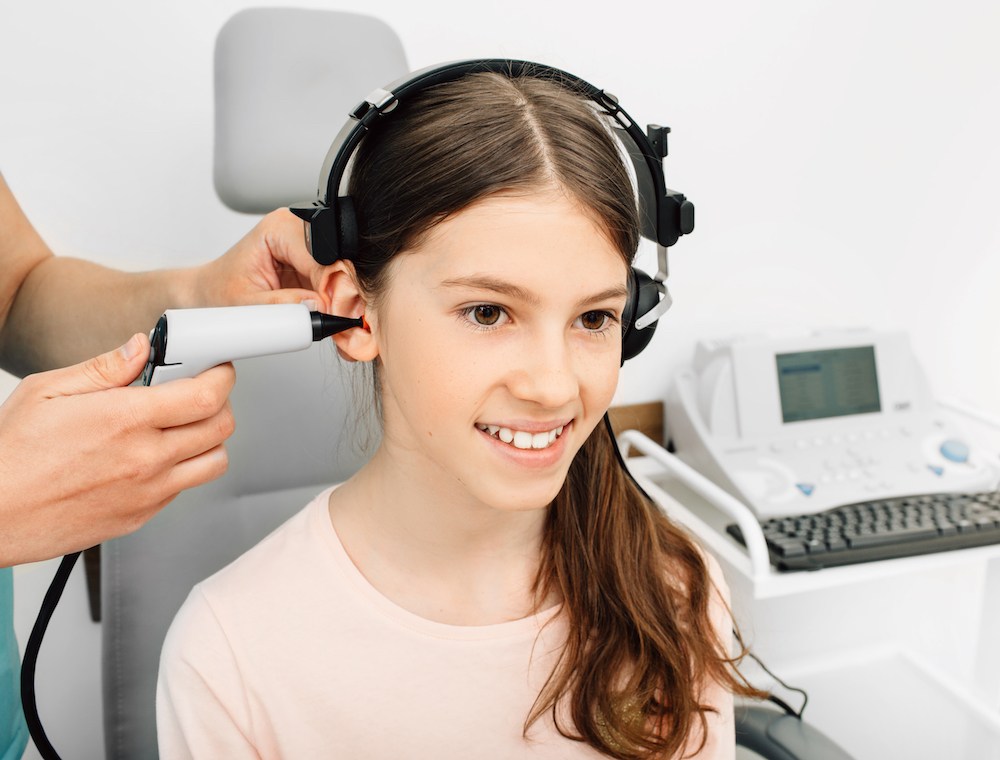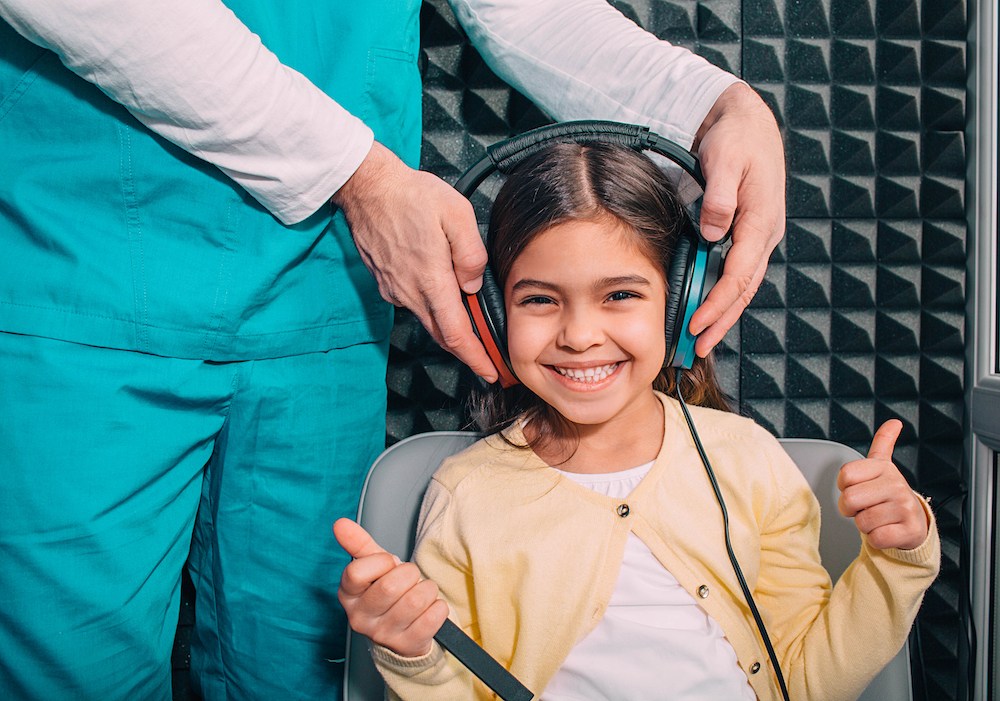Why Early Detection of Hearing Issues Matters
Hearing loss sneaks up on people in ways that go beyond just turning up

By: admin | September 25, 2024
Summer brings the joy of outdoor concerts and festivals, a perfect opportunity to enjoy music and socialize. However, these events can pose a risk to your hearing health if not handled with care. The range of sounds at these gatherings can sometimes reach decibel levels that may harm your hearing over time. But don’t worry, you don’t have to miss out on the fun. There are ways to protect your ears while still enjoying every beat of your favorite songs.
In order to fully grasp how sound can be damaging to your auditory system, it’s important to understand how we actually hear! Our auditory system is a complex and intricate network designed to capture and interpret sound, enabling us to experience and understand the auditory world around us. It begins with the outer ear, also known as the pinna, which plays a crucial role in capturing sound waves from the environment. The pinna, with its unique shape, helps funnel sound waves into the ear canal, directing them towards the eardrum.
As sound waves travel through the ear canal, they reach the eardrum, a thin membrane at the end of the canal. The eardrum vibrates in response to these sound waves, and these vibrations are transferred to the middle ear. The middle ear contains three small bones called the ossicles: the malleus (hammer), incus (anvil) and stapes (stirrup). These bones amplify the vibrations from the eardrum and transmit them to the oval window, which is a membrane-covered opening to the inner ear.
The inner ear houses the cochlea, a spiral-shaped, fluid-filled structure that is critical for converting vibrations into electrical signals. Inside the cochlea, vibrations cause the fluid to move, which in turn makes the basilar membrane vibrate. This movement stimulates thousands of tiny hair cells embedded in the basilar membrane. Different frequencies of sound cause different areas of the basilar membrane to move, allowing specific hair cells to be activated based on the pitch of the sound.
Once the hair cells are stimulated, they generate electrical signals that are transmitted to the auditory nerve. The auditory nerve carries these signals from the cochlea to the brainstem. From the brainstem, the signals are relayed to the auditory cortex in the brain, where they are processed and interpreted. The brain integrates these signals with other sensory information to recognize and understand the sounds we hear, like speech, music or environmental noises.
The auditory system also includes feedback mechanisms to regulate hearing sensitivity. For example, the middle ear muscles can contract to reduce the impact of loud sounds, protecting the inner ear from potential damage and enhancing our ability to hear softer sounds. This feedback system is essential for adapting to varying sound environments and maintaining optimal hearing health.
Loud sounds can significantly damage your hearing by impacting the delicate structures within the ear, particularly the hair cells in the cochlea of the inner ear. Here’s a detailed look at how this process unfolds:
When exposed to loud sounds, the energy from the sound waves travels through the ear canal and strikes the eardrum, causing it to vibrate. These vibrations are transmitted through the ossicles in the middle ear, amplifying the sound before it reaches the inner ear. In the cochlea, the vibrations create fluid waves that move the basilar membrane, stimulating the hair cells to convert these mechanical vibrations into electrical signals for the brain.
The hair cells in the cochlea are sensitive and delicate. Each hair cell is tuned to respond to specific frequencies of sound. When exposed to excessive noise levels, these hair cells can become overstimulated. High-intensity sounds cause excessive movement of the fluid in the cochlea, leading to the overexertion of the hair cells. This overstimulation can result in the bending and breaking of the tiny hair-like projections on the hair cells, which are crucial for detecting sound.
Repeated or prolonged exposure to loud noise can cause permanent damage to these hair cells. Unlike many other cells in the body, once these hair cells are damaged or destroyed, they do not regenerate. As a result, the ability to detect specific frequencies diminishes, leading to hearing loss. This damage can manifest as a gradual decline in the ability to hear high-frequency sounds, like the chirping of birds or the high notes in music.
In addition to direct damage to hair cells, loud noises can also affect the auditory nerve, which carries signals from the cochlea to the brain. Chronic exposure to loud sounds can result in a condition known as noise-induced hearing loss (NIHL), where the auditory nerve becomes less effective at transmitting sound signals. This contributes to overall hearing degradation and can exacerbate difficulties in understanding speech, especially in noisy environments.
The effects of loud noise on hearing are cumulative. Even brief exposures to extremely loud sounds, like concert music or gunshots, can cause immediate and potentially irreversible damage. Over time, repeated exposure to less intense but still damaging noise levels, like from heavy machinery or loud music through headphones, can also lead to gradual hearing loss.
Now let’s focus on the role of decibel levels in noise-induced hearing loss. The key to understanding how loud sounds can affect your hearing lies in the measurement of sound intensity, known as decibels.
Sound intensity is measured in units called decibels (dB). When you’re exposed to high decibel levels for long periods, it can potentially lead to hearing loss. That’s why it’s important to monitor and control the volume of sounds you’re exposed to, especially during activities like attending music concerts or festivals.
Being able to identify hazardous sound levels at music events is an important step towards protecting your hearing health. It can empower you to make informed decisions about when and how to use ear protection, potentially reducing the risk of noise-induced hearing loss. This knowledge not only enhances your ability to enjoy music events safely but also contributes to long-term hearing wellness.
Selecting the right earplugs for music festivals can make a significant difference. The goal is to find earplugs that offer noise reduction, without compromising the quality of the music. High-fidelity earplugs are designed to lower harmful decibel levels while maintaining sound clarity, making them an ideal choice for music lovers. Protecting your hearing doesn’t mean sacrificing your enjoyment – with the right earplugs, you can have both!
When it comes to ear protection, two popular options are custom-fitted and disposable earplugs. Both have their unique advantages and potential drawbacks, so it’s important to understand the differences to make an informed choice.
Custom-fitted earplugs are made specifically for your ears, providing a perfect fit and superior comfort. They offer excellent noise reduction while maintaining sound quality, making them ideal for frequent use. However, they come with a higher price tag compared to disposable ones. On the other hand, disposable earplugs are budget-friendly and convenient as they can be easily replaced if lost or damaged. Despite this convenience, they may not offer the same level of noise reduction or comfort as their custom-fitted counterparts.
Having chosen the right earplugs, it’s equally important to use them correctly for maximum protection. Proper usage of earplugs can significantly enhance their effectiveness in protecting your hearing.
Firstly, always ensure your hands are clean before handling earplugs to avoid introducing bacteria into your ears. For foam earplugs, roll them into a thin cylinder before gently inserting them into your ear canal. Hold it in place until it expands and fits snugly. For pre-molded or custom-fitted earplugs, pull the top of your ear upwards and outwards to straighten your ear canal before insertion. Here are some additional tips:
Taking breaks from loud sounds is essential for maintaining your auditory health and preventing long-term hearing damage. Continuous exposure to high noise levels puts significant strain on the delicate hair cells in the cochlea, which are crucial for translating sound vibrations into signals that the brain can interpret. These hair cells can become overstimulated and damaged, leading to temporary or even permanent hearing loss if not given time to recover. Regular breaks from noisy environments allow these cells to rest and recuperate, reducing the risk of cumulative damage and preserving your hearing ability.
Prolonged exposure to loud noises can also lead to auditory fatigue, where your ears and brain become overwhelmed by constant sound, making it harder to hear and understand speech. This fatigue can cause temporary hearing difficulties, and taking breaks helps alleviate this strain, allowing your auditory system to reset. By stepping away from loud sounds, you not only prevent the development of noise-induced hearing loss but also enhance your overall hearing health and function. This practice also fosters greater awareness of your hearing health, encouraging you to make informed choices about noise exposure and protection.
If you experience symptoms of noise-induced hearing loss, it’s important to consult a hearing professional promptly. Signs that indicate you should seek professional help include persistent ringing or buzzing in your ears, difficulty understanding speech, especially in noisy environments, or a noticeable decrease in your ability to hear high-frequency sounds. Additionally, if you find that you frequently need to raise the volume on devices or have trouble hearing people in conversation, it may be time to seek assistance.
Even if the hearing loss appears gradual, it’s crucial to address it early. A hearing professional can conduct a thorough evaluation to assess the extent of the damage and recommend appropriate interventions. Ignoring these symptoms can lead to further hearing deterioration and potentially limit treatment options. Early consultation can help in managing the condition more effectively and in implementing strategies to protect your remaining hearing.
When it comes to concerts, festivals and other fun, but noisy events, it’s all about balance – enjoying the music you love, while taking steps to protect your hearing health. At Hearing Solutions, Inc., we understand that every person has unique needs when it comes to hearing protection. That’s why our team of dedicated hearing professionals is always ready to provide personalized advice and solutions tailored just for you. If you have any questions or need further information about protecting your ears during loud events, feel free to contact us at our Fargo, ND location at (701) 566-7280.
Tags: hearing loss prevention tips, hearing protection services

Hearing loss sneaks up on people in ways that go beyond just turning up
By: admin | October 20, 2025

Most children have little experience with hearing tests beyond the brief
By: admin | September 24, 2025

Children learn by listening – to parents reading stories, teachers
By: admin | May 23, 2025
